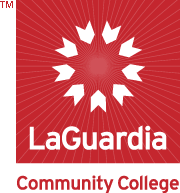Document Type
Assignment
Publication Date
12-2019
Abstract
This assignment, aligned to LaGuardia Community College’s Global Learning Core Competency and Digital Communication Ability, was designed for the laboratory part of Human Anatomy and Physiology I (SCB203) course. The assignment, “Human Diseases Related to Different Body Systems,” aims to promote students’ learning and preparation towards their future major in STEM and in the Allied Health Programs. SCB203, taught by faculty in the Natural Sciences department, is a program-core course for Liberal Arts-Mathematics and Science majors and a key Pre-Clinical course (prerequisite) for future enrollment of students into several Allied Health majors such as Nursing, Occupational Therapy, Physical Therapy, Radiologic Technology, Dietetics, Veterinary Technology, Therapeutic Recreation and EMT/Paramedic Program. It is crucial then that these programs’ goals and the Human Anatomy and Physiology courses (such as SCB203) align well with and promote the scale up of assignments in the curriculum. The dimensions of the Global Learning Core Competency and Digital Communication Ability rubrics reflected in Human Diseases and Healthcare also run across many courses in the Health Sciences programs; for instance, in the SCO101 course in the Occupational Therapy program and in HTR101 Therapeutic Recreation to help build student learning and professional identities. This assignment in SCB203 can offer the first experience to students to practice on these needed skills and will contribute to students’ future academic performance in the Health Sciences-related programs.
LaGuardia’s Core Competencies and Communication Abilities
The assignment was initially developed as part of the Provost Learning Space project on “Evidence of Student learning in SCB203” in 2016-17 and has been implemented in all the SCB203 laboratory sections taught by Dr. Gupta since Spring 2017. It entails research by student groups on the etiology, symptoms, treatment/preventive options and global distribution of human diseases related to different body systems, as well as the socio-economic, environmental or genetic factors leading to such distributions. PowerPoint presentations in class (using different digital modalities such as text, images, tables, graphs, citations or hyperlinks), collaborative communication on each other’s work via ePortfolio, and submission of simple concept sheets provide an opportunity for students to earn extra credit while revising major concepts pertinent to the final exam. This low-stakes exercise is worth 1% of the total course grade and students have 2 weeks to complete it.
Creative Commons License

This work is licensed under a Creative Commons Attribution-Noncommercial 4.0 License


Comments
This resource is part of the Learning Matters Assignment Library.